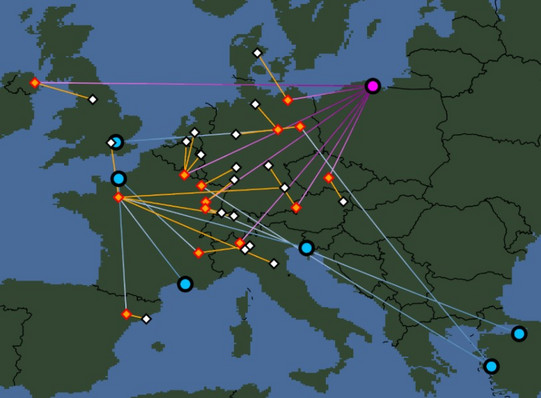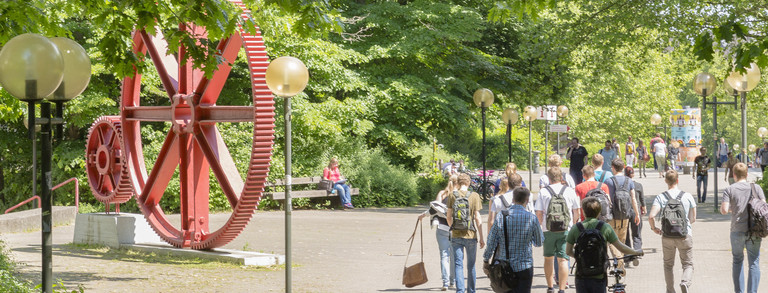Strategic network planning of seaport hinterland transport using gateways for consolidation of the LCL shipments
- Mathematical Optimization
Background
As a consequence of globalization, rapidly growing transport of goods can be observed in continental transport and on intercontinental transport routes. Currently, the transport routes are considered individually, which often leads to suboptimal utilization of the sea freight containers.
Against this background, the Institute of Transport Logistics (ITL) works on a transfer project in collaboration with the Chair of Discrete Optimization under the direction of Prof. Dr. Christoph Buchheim, which is funded by the Deutsche Forschungs¬gemeinschaft (DFG). The application partner in this project is DB Schenker, one of the leading transport service providers of sea freight transport.
The focus of the project is to decide which transport routes should be used for optimal utilization of the containers. The key factors here are the consolidation of goods, the step cost function for the Less-than-Containerload deliveries (LCL), and the uncertainty about the future transport volumes.
Targeted results
In consideration of these key factors, the project aims to develop a new type of network structure for the cost-efficient transport of consolidation of the LCL shipments. Therefore new optimization methods for this practical problem will be developed, which can also be transferred to further problems.
Procedure
At the beginning of the research project, optimization models for strategic network planning are developed in consideration of the consolidation effects of the LCL shipments. A major challenge here is to integrate the transport volumes, which fluctuate highly over time, into the optimization models. Therefore multistage stochastic and robust models are constructed by both Chairs. In a further step, according to these models heuristic and exact solution methods, including a decomposition method, are developed. Due to the expected complexity, the mathematical structure of the resulting optimization problems is used.

Contact: Prof. Dr.-Ing. Uwe Clausen
Partner







